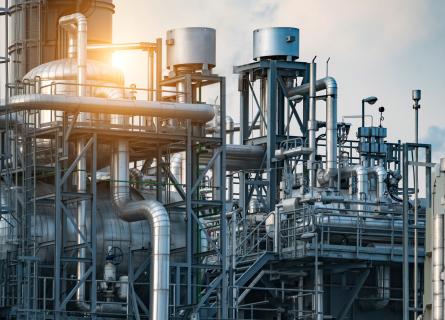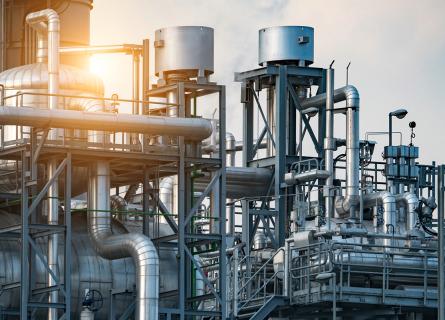
How to handle safety engineering interfaces in industrial plant engineering projects - A guide
Safety engineering-related interface management is a vital process for ensuring the safety of industrial plant engineering projects. It involves identifying and managing the communication and interaction between different project parties that affect the safety of the production process. It also requires applying various tools and methods for hazard identification, risk assessment, risk prevention and mitigation.
Safety engineering interface management is important for enhancing safety performance, meeting or exceeding compliance, and integrating safety management into project execution. AFRY is a leading provider of industrial safety engineering and consulting services that can help you with safety engineering-related interface management in your industrial investment projects.
What are safety engineering-related interfaces and how to manage them in industrial plant engineering projects?
Industrial plant engineering requires many safety engineering activities and engineering tasks, such as obtaining chemical safety permits, machinery CE marking, conducting HSE design reviews and performing various risk assessments. These risk assessments may include Hazard and Operability Study (HAZOP), explosion risk assessment (ATEX), machinery risk assessment or pressure equipment hazard identification, depending on the nature of the project. They may also involve food safety or railway safety assessments when needed. Besides performing individual assessments, the project also needs to identify and manage the potential overlaps, interfaces and their impacts on each other. This article shows some typical interfaces that AFRYs experts have encountered during industrial plant engineering projects.
A typical example of an interface in an industrial plant is related to explosive atmospheres (ATEX) and the CE marking of assemblies of machinery. The requirements of both machinery and ATEX directives shall be fulfilled. Another interface example is between processes and machinery, which requires i.e. managing overlapping topics in risk assessments.

Safety engineering-related interfaces in different project execution phases
Industrial plant engineering project consists of many different phases, from early phase development like pre-feasibility and feasibility studies, to basic engineering and implementation phase detailed engineering. Each phase has its own safety engineering-related interfaces that need to be identified and managed.
- In the concept and pre-feasibility engineering phases, some of the safety engineering interface-related activities are:
- Starting various permitting-related activities, such as environmental impact assessment (EIA) and identification of Major accident hazard (MAH) assessment
- It is crucial to identify any safety and environmental factors that may impact the facility’s location. The potential consequences of accidents caused by chemicals and explosives that could affect nearby establishments are assessed.
- Consulting supervising authorities as early as possible when planning activities involving major accident hazards.
- Land use planning shall permit the location of a new facility which means that area must be reserved for industrial and storage operations.
- Sharing information between different parties, such as safety engineering, environmental consulting, plant engineering, supervising and planning authorities
- Starting environmental and chemical safety permit preparation simultaneously, as both permit applications include partially the same information
- Applying the concept of inherent safety in engineering to proactively eliminate or reduce potential risks with principles of elimination, minimisation, substitution, moderation and simplification
- Identifying and determining the required project-specific hazard identification and risk assessment techniques to enable robust and systematic risk assessments
2. In the basic engineering phase, some of the safety engineering interfaces and activities are:
- Consideration of more detailed safety requirements in the layout engineering of the plant, such as sufficient safety distances, safe placement of equipment and machinery, and safety of different routes and roads
- Identifying the responsibilities related to safety in procurement and contracting with the equipment, machinery or technology suppliers including the requirements related to explosive atmospheres (ATEX), process safety and CE marking
- Ensuring that the suppliers understand and use suitable and appropriate risk assessment methods, as several different risk assessment methods are needed to identify hazards comprehensively. For example, the hazards related to the processes and the machines shall be covered, which means that both Hazard and Operability Study (HAZOP) (according to standard IEC 61882) and risk assessments of the machinery (according to standard EN ISO 12100) are needed.
- Evaluating all aspects of safety and identifying hazards to obtain sufficient information for engineering and ensure that the engineering can proceed on schedule
3. During the detailed engineering phase, the number of safety engineering activities is at its highest, and at the latest at this stage, the interfaces must be managed efficiently. In the detailed engineering phase, some of the safety engineering activities are:
- Preparing final procurement packages including safety requirements
- Preparing risk assessments and documents required by the authorities
- Preparing CE markings, for example for assemblies of machinery
- Identifying the effects of the decided protection measures on other risk assessments
- Managing the interface between machinery CE marking and ATEX directives, which have different requirements for assemblies of machinery in explosive atmospheres
Example of interfaces in functional safety between different engineering disciplines
Another example of significant interfaces during the functional safety life cycle are all activities of different engineering disciplines and their coordination. Engineering related to functional safety starts latest in the basic engineering phase and it continues in the detailed engineering phase. Both process safety and machinery-related functional safety requirements must be considered in engineering. It is important to note that different standards are applied for risk assessments and functional safety engineering for processes and machinery (Figure 2).

Initial data from HAZOP and machinery risk assessment should be used to engineer safety functions. Safety functions may involve both process and machinery safety functions and relevant standards need to be followed. For example, a Safety Requirement Specification (SRS) should be prepared for safety functions, which sets requirements for implementation and maintenance of safety functions during the whole facility life cycle.
For process safety functions, the initial data are identified during HAZOP analyses. After HAZOP analyses, Layers of Protection Analysis (LOPA) determines the safety integrity level (SIL) for each safety function.
For machinery safety functions, the initial data are identified during risk assessments of machines and assemblies of machinery. During risk assessments, the performance level (PLr) or the safety integrity level (SIL) are determined for each safety function.
When doing risk assessments, it should be ensured that hazards are identified with suitable methods and possible overlaps are recognized, and compliance of safeguarding is ensured. This is especially important for functional safety because a deviation identified in the HAZOP study may lead to a hazardous consequence, which is actually caused by a machine safety function. For example, a no-flow deviation can be caused by a machine safety function, such as the opening of an interlocked door that stops a conveyor. Safety interface coordination should be ensured and engineered to avoid dangerous consequences between process and machine interfaces.
Documentation and safeguards related to process, machinery and functional safety should be updated and maintained throughout the lifecycle of the facility. Risk assessments should be updated according to changes and modifications. All changes and modifications should be planned and verified.
How AFRY can help you with safety engineering interface management
A successful investment project requires managing multiple areas and disciplines to achieve the project goals on scope, time, quality and budget. It also requires ensuring safety at every phase of the project, as safety measures affect project schedules and cost estimates. AFRY uses AFRY Safety Stepwise™, a systematic HSE (Health, Safety and Environment) management procedure in projects.
AFRY Safety Stepwise™ helps to achieve inherent safety in the initial stages of design. HSE activities and tasks are aligned with the project schedule and integrated with project management. The HSE activities are monitored by the project safety management through the Safety Stepwise activity list.
AFRY offers a comprehensive range of industrial safety services across industry, energy and infrastructure sectors to manage interfaces efficiently. Our experts have a technical background, process technology competence and an understanding of the features and functionalities of industrial processes and facilities. By combining this deep technical know-how with knowledge of the latest industrial safety requirements, we are your best provider of safety services.

Tips for managing safety engineering interfaces:
The question then arises as to how to manage these interfaces in practice. AFRY’s experts have compiled some useful tips for managing safety engineering interfaces.
- Identify and define interfaces between stakeholders
- Specify roles and responsibilities
- Ensure clear communication and documentation
- Manage engineering of interfaces - Eliminate disconnects during engineering and coordinate interaction between different parties and stakeholders
- Change management – have a defined process to update all relevant risk assessments and documents in case of any changes







